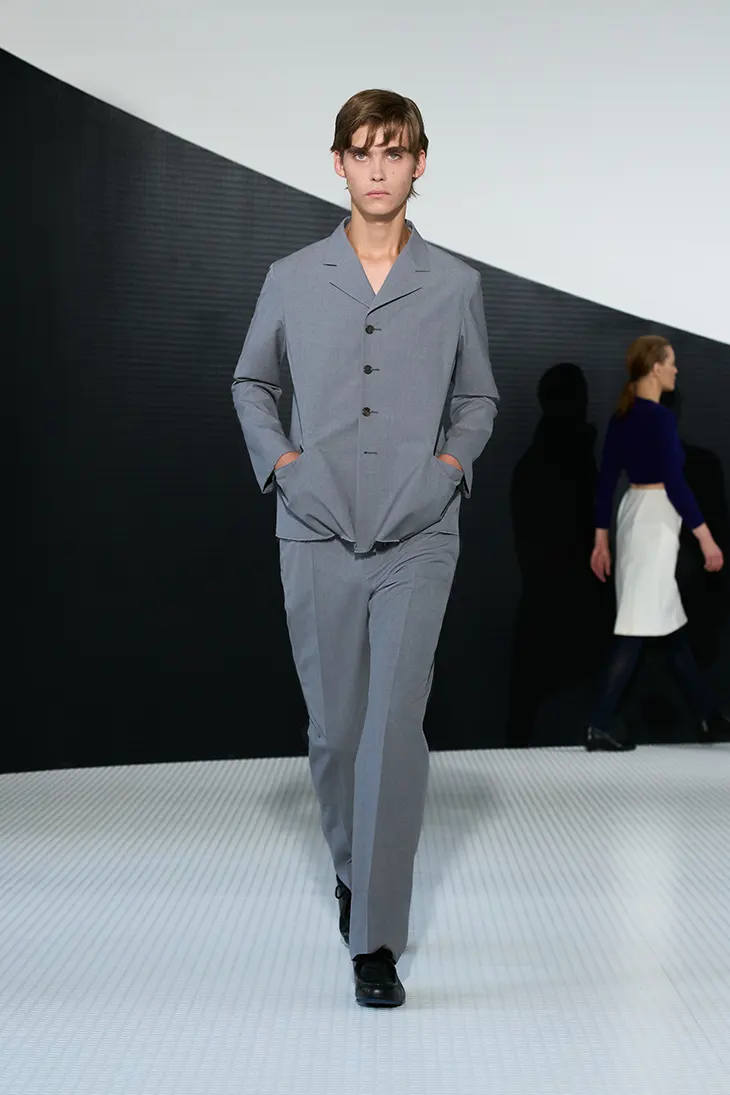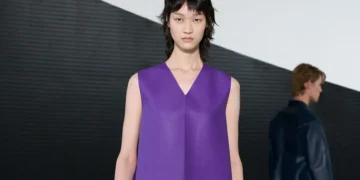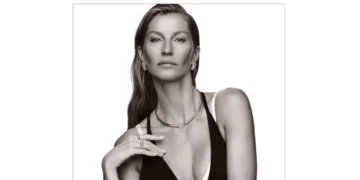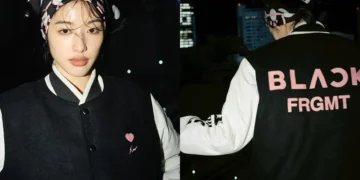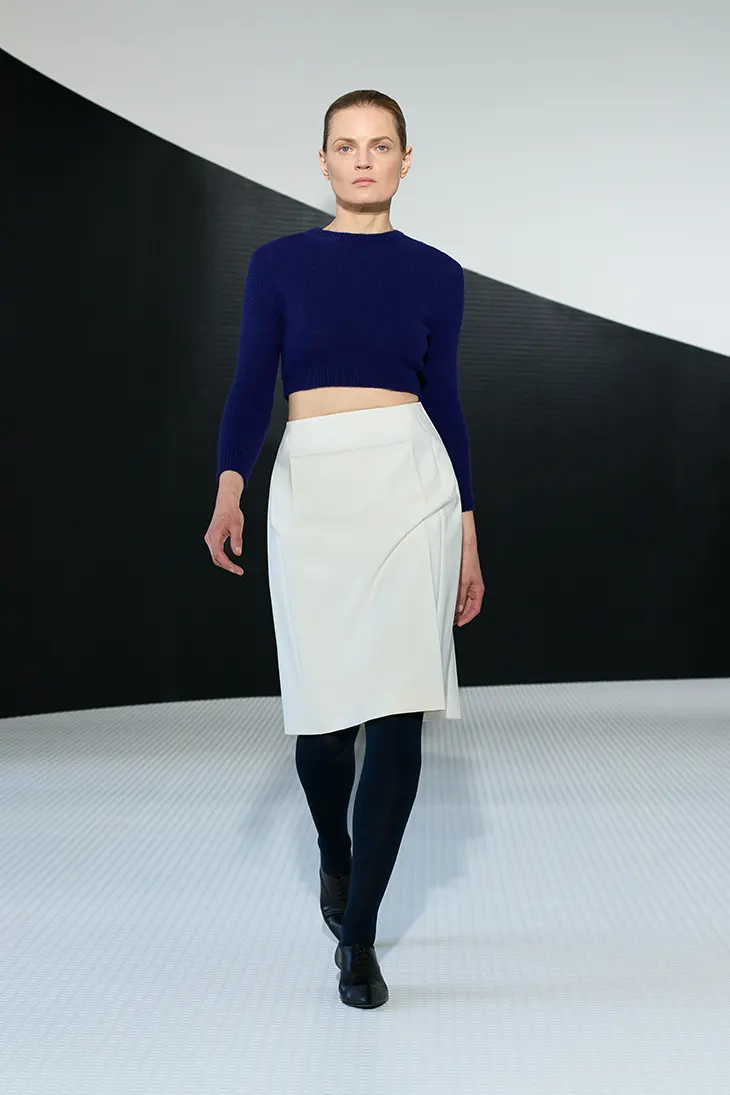
The SS26 collection marked a defining moment for Jil Sander as Simone Bellotti unveiled his first work as Creative Director. The show returned to the brand’s Milan headquarters, once a cinema, later transformed into a stark three-storey building, for the first time since 2017. Against whitewashed walls and a black-arched runway, the atmosphere was heightened by the electronic bleeps of Bochum Welt, a score that mirrored Bellotti’s intellectual yet restless approach to minimalism.
SPRING SUMMER 2026
Bellotti framed his debut as a process of questioning: what does it mean to subtract while adding? Can restraint coexist with personality? His answer came in a play of contrasts, strictness offset by grace, structure softened by lightness, severity punctuated with freedom. The collection presented minimalism as a fertile ground for reinvention, where tailoring and fabric choices became tools for tension and release.
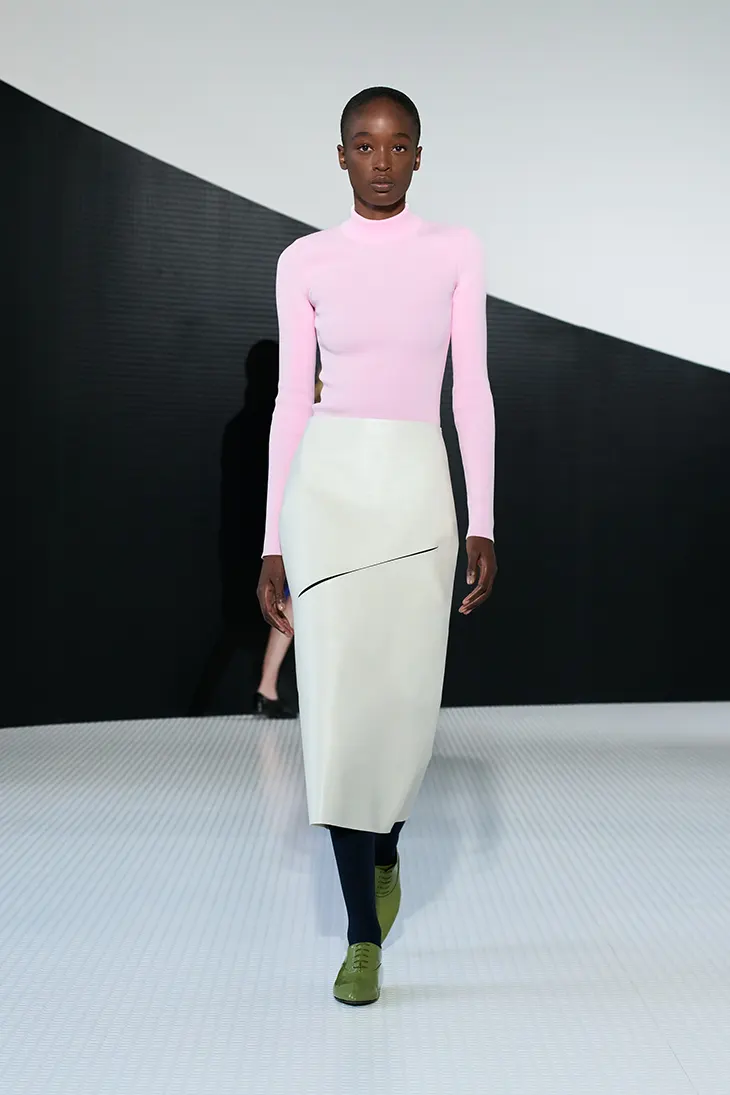
The silhouette remained vertical and rational, echoing Jil Sander’s heritage of precision. High-buttoned jackets and tailored coats were disrupted by raw hems and unexpected folds. Dresses and skirts sprouted clustered georgette strips, evoking the flutter of pages. Double-faced wool and leathers suggested solidity yet moved with a surprising weightlessness. Knitwear and shirting carried a sense of athletic readiness, underscoring the balance between discipline and fluidity.
Bellotti leaned into tactile experimentation. Techno fabrics gleamed with a clinical finish, offset by fragile floral motifs. Transparency revealed the body, while mirrored leather and sequined armors suggested both protection and vulnerability. The interplay of matte and shine, rigidity and softness, created an atmosphere of constant duality, as if the collection itself existed between past and present, Milan and Hamburg, history and now.
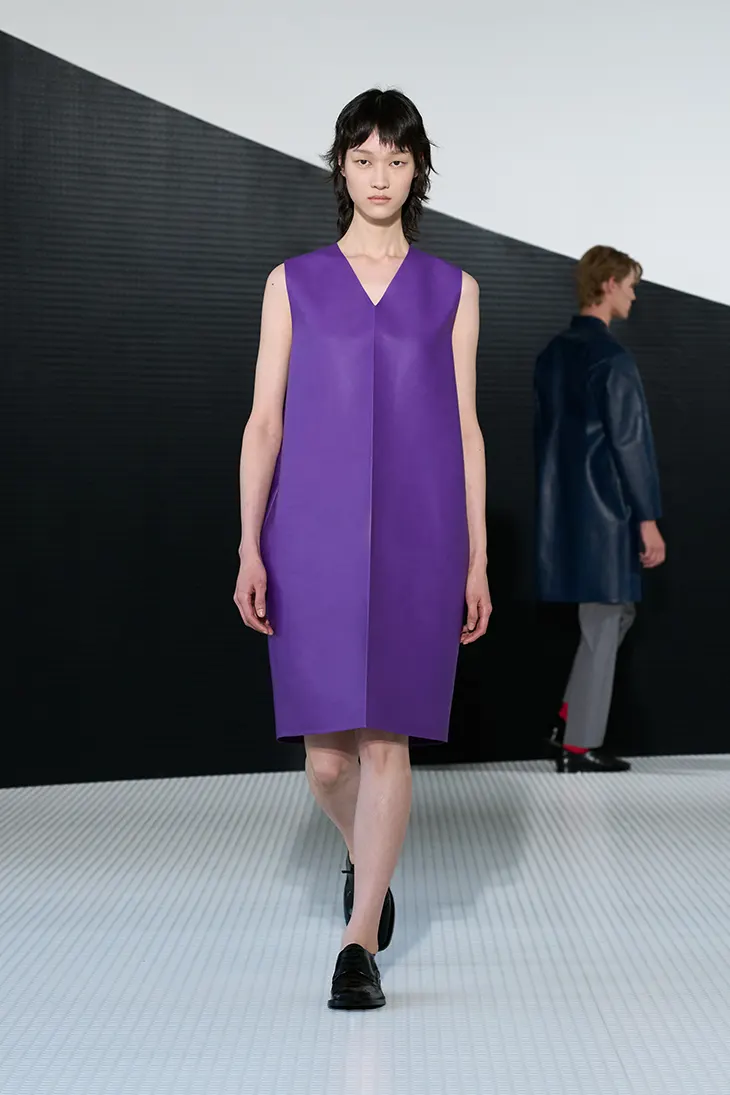
One of the most striking aspects of the debut was the mirroring of menswear and womenswear. Shapes and textures moved across both, from tailored jackets to fluid silks, reinforcing a dialogue rather than division. The shared vocabulary suggested Bellotti sees Jil Sander not as two separate lines but as a unified expression of pared-down design.
Accessories carried equal weight. Square-toed lace-ups, cut-out ballerinas, and kitten-heeled brogues blurred utility and elegance. Sandals and handbag, especially the new Pivot bag with its curved, versatile line, emphasized the collection’s functional clarity. Each detail seemed designed to question what a modern uniform can look like, while retaining individuality.
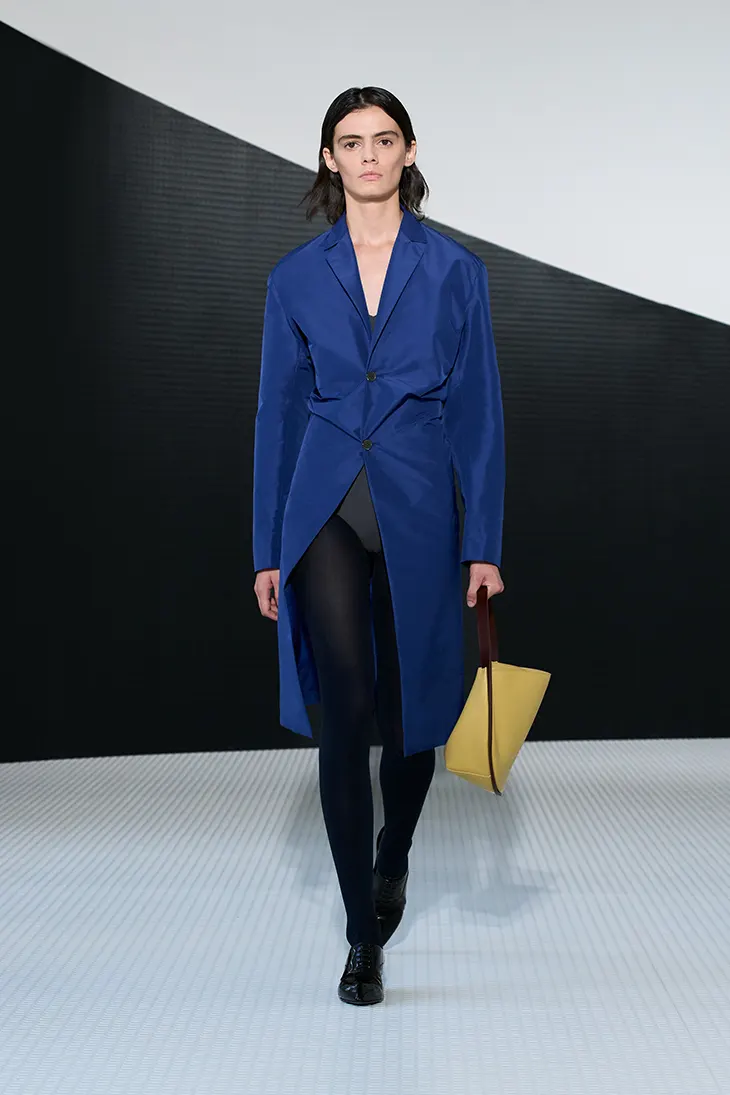
Bellotti’s first collection for Jil Sander was a prelude, serious yet playful, precise yet searching. His questions about minimalism’s elasticity remain open-ended, but the show suggested he is willing to interrogate the codes deeply rather than impose instant change. It was a debut grounded in the label’s DNA, yet alert to new interpretations, setting the stage for a thoughtful evolution.
